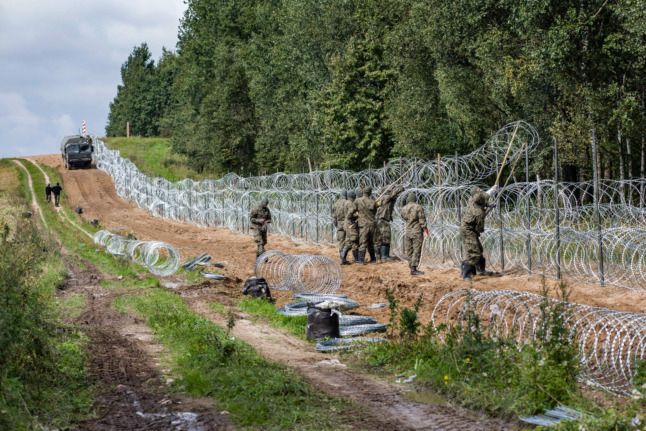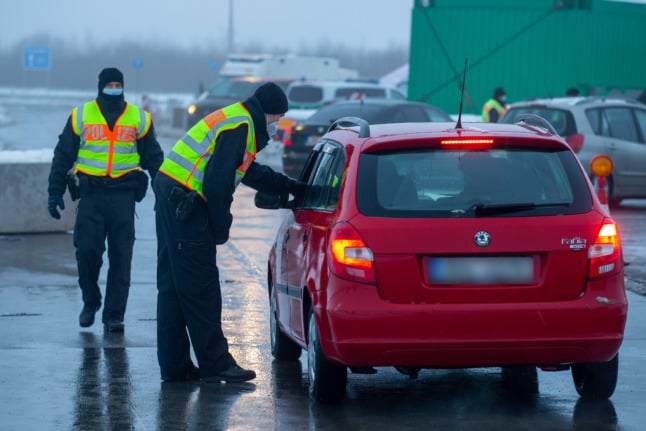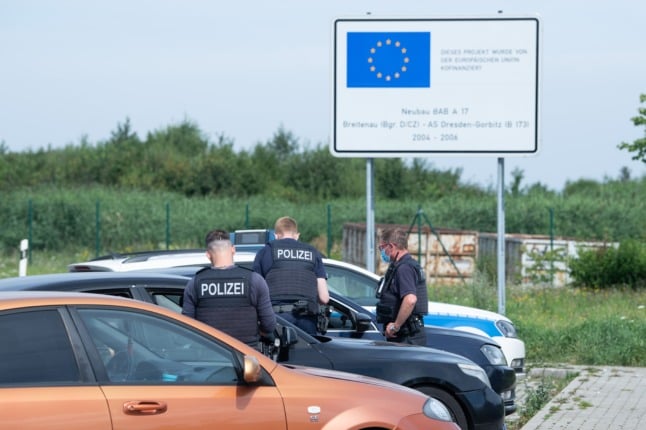What’s going on?
Thousands of people from Iraq, Syria and other crisis areas have come to Germany via Belarus and Poland since the summer, and concern is growing in the German Interior Ministry. This Wednesday, outgoing Interior Minister Horst Seehofer (of the centre-right CSU, the Bavarian sister party of Chancellor Angela Merkel’s CDU) will hold talks on potential solutions such as temporary borders between Poland and Germany. However, there are no simple solutions in sight.
The background to this involves a complicated relationship between the European Union and Belarus’ authoritarian leader Alexander Lukashenko.
Tensions with the EU have been rising since Belarus’ elections in August 2020, which saw violent crackdowns on opposition leaders and campaigners and culminated in what is largely considered to be an illegitimate landslide for Lukaschenko. Then, in spring, Lukaschenko forced a plane to reroute and land in Minsk so that government officials could arrest a Belarussian political blogger and his girlfriend, prompting the EU to impose sanctions on the country.
READ ALSO:
- Germany summons Belarus envoy over forced Ryanair landing
- Belarusians file case in Germany against Lukashenko regime
In retaliation, Lukashenko announced that he would no longer stop migrants on their way to the EU. According to German Foreign Minister Heiko Maas (SPD), Lukashenko is now acting as the “head of a state smuggling ring”, essentially pushing through refugees through the country on their way into Schengen.
How many people have come to Germany via the Belarus route?
More than 5,000 unauthorised entrants have been registered by the Federal Police on the Belarus route this year. Until the end of July, only 26 people had entered Germany without permission via Belarus and Poland.
By August, however, 474 refugees had entered the country, followed by 1,903 more in September, according to the latest data from the Federal Police. By October 17th, another 3,000 people had entered the country without permission at the German-Polish border, most of them probably also via the Belarus route.
Recent figures from Brandenburg – the state that surrounds Berlin and where most of the people are arriving – seem to indicate that the numbers are levelling off slightly. Last weekend, 288 people were apprehended in the border area, compared to 392 a week earlier. Whether this is will be a longer term trend remains to be seen.
This weekend alone German police have detained 423 migrants on the PL-DE border who have been smuggled to the EU by the regime in Minsk. German police trade union fears it could lead to a collapse and calls to introduce controls on the border with Poland.https://t.co/q683sHBbSV
— Tadeusz Giczan (@TadeuszGiczan) October 18, 2021
It’s worth noting, however, that the situation is much less severe than in 2015 and 2016, when Germany last faced a so-called “migrant crisis”. In 2015, the Federal Office for Migration and Refugees (BAMF) recorded 476,649 initial and subsequent applications for asylum, followed by 722,370 initial applications in 2016.
READ ALSO: ‘I’d do it again’: Refugees reflect on their journey to Germany five years on
In contrast, BAMF received just 100,278 initial applications for asylum by the end of September in 2021. However, this was 35.2 per cent more than at the same time last year – though that might be explained by the difficulties of travelling at the height of the pandemic.
What is the situation on Poland’s border with Belarus?
Poland, Latvia and Lithuania are desperately trying to close the EU’s external border with Belarus. All of these countries are building border fences, while Poland is also planning a permanent fortification. The border guards there have registered around 10,000 attempts at illegally crossing the border to Belarus since the beginning of October alone – after 6,000 in September. Many migrants are now being turned away at the border, which is legal under international law.

Polish police erect a barbed wire fence on the Belarussian border. Photo: picture alliance/dpa/SOPA Images via ZUMA Press Wire | Attila Husejnow
What is illegal, however, are so-called push-backs – when people have already reached EU territory and would actually have the right to apply for asylum. There have been reports in the Polish press that migrants have been pushed back into Belarus, where they have been beaten up by local authorities and driven back towards Poland.
The exact situation is unclear because Poland has imposed a state of emergency in the border area. In any case, despite all of the hurdles currently in place, thousands have made it to Germany via the EU’s external borders and Poland.
What about border between Germany and Poland?
Federal Interior Minister Seehofer has already approached his Polish counterpart Mariusz Kaminski to discuss how to secure the borders between the two countries.
So far, he has suggested joint patrols by German and Polish border guards, mainly on the Polish side. This would be a measure “below the threshold of a temporary reintroduction of internal border controls”, Seehofer claimed. However, some have interpreted this as a warning signal to Poland, because it is precisely these border controls, which are generally not permitted in the Schengen area, that are now being discussed in Germany.
How will this affect commuters and tourists?
During the Covid-19 pandemic, some checks have been put in place along Germany’s external road borders already in order to ensure that everyone entering has proof of vaccination, recovery or a negative test to hand. However, with limited police resources, these have mostly been rather patchy spot checks on vehicles.
READ ALSO: REVEALED: Germany’s plans to curb Delta wave with new Covid travel rules
If Germany and Poland decide to tighten up the borders further with stationary checkpoints, it seems increasingly likely that people travelling between the two countries would need to have identification and residence permits to hand in order to be sure that they can pass through without issues.
In addition, border checkpoints could lead to traffic jams and delays in the transportation of goods between the two countries. For people who regularly commute between Poland and Germany, this would probably mean additional travel time on both legs of the journey.

Two police officers check drivers entering Germany from the Czech Republic as part of the Covid travel regulations. Photo: picture alliance/dpa/dpa-Zentralbild | Daniel Schäfer
However Dieter Romann, the Federal Police President, has emphasised that people will still be able to travel freely between the two countries if they’re authorised to do so.
“We have no intention of restricting the free movement of people, and we have no intention of restricting the free movement of goods,” he told Tagesschau on Wednesday. “But we do want to look into one truck or another to see if people are dying of thirst or suffocating there.”
Controls at the border between Poland and Germany are primarily a fight against smugglers, he added.



 Please whitelist us to continue reading.
Please whitelist us to continue reading.
Member comments